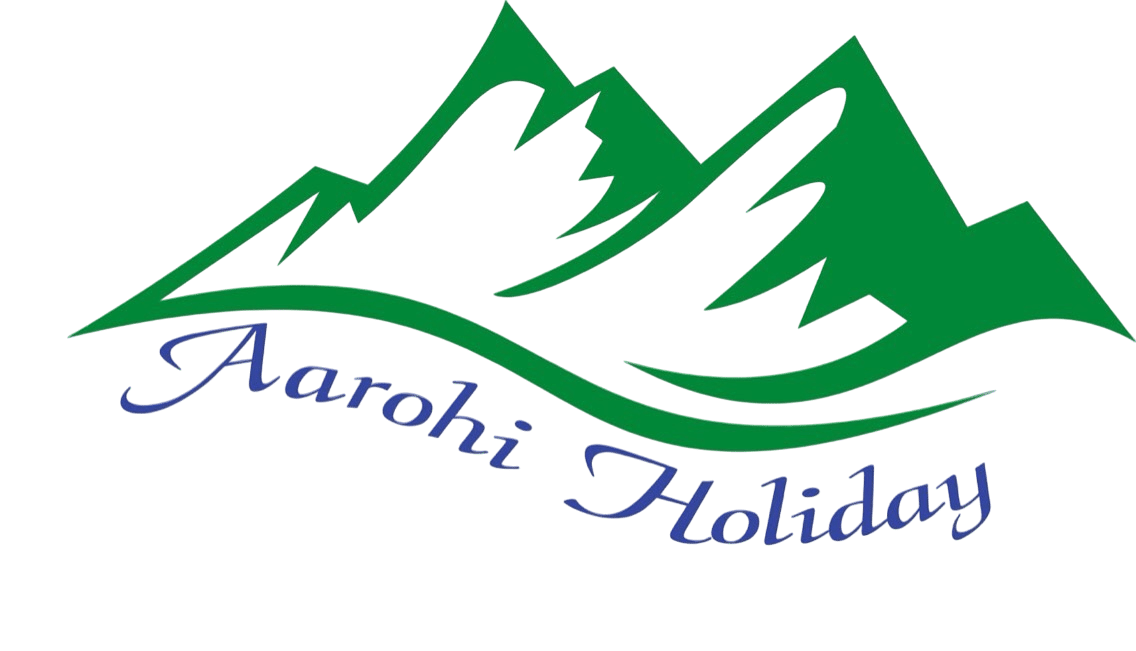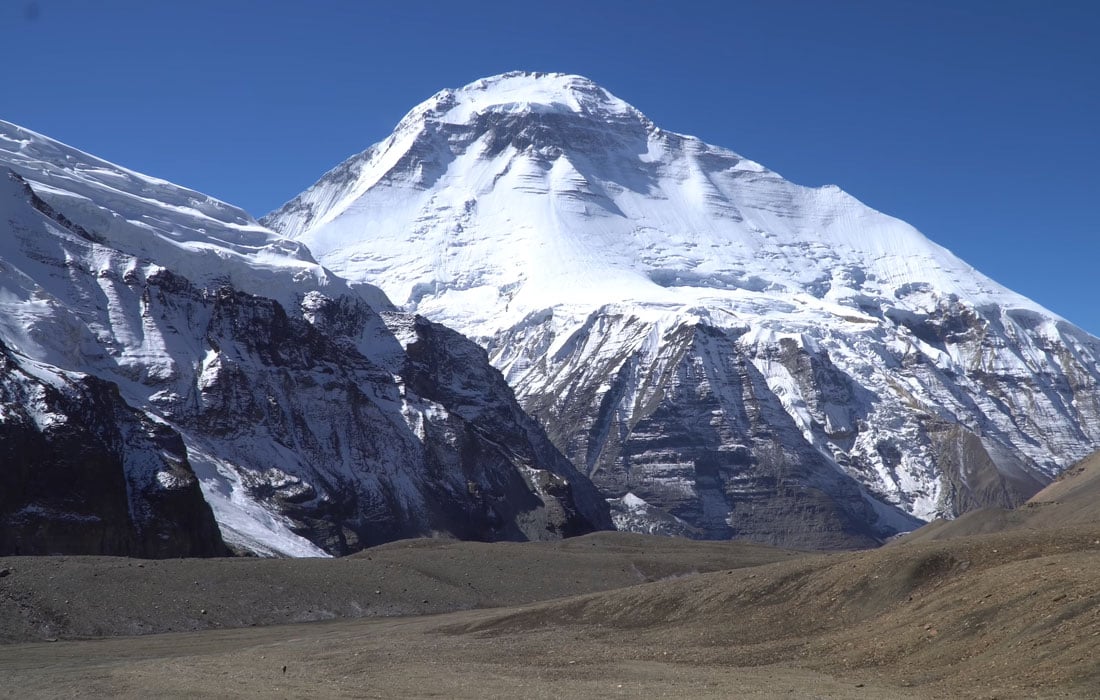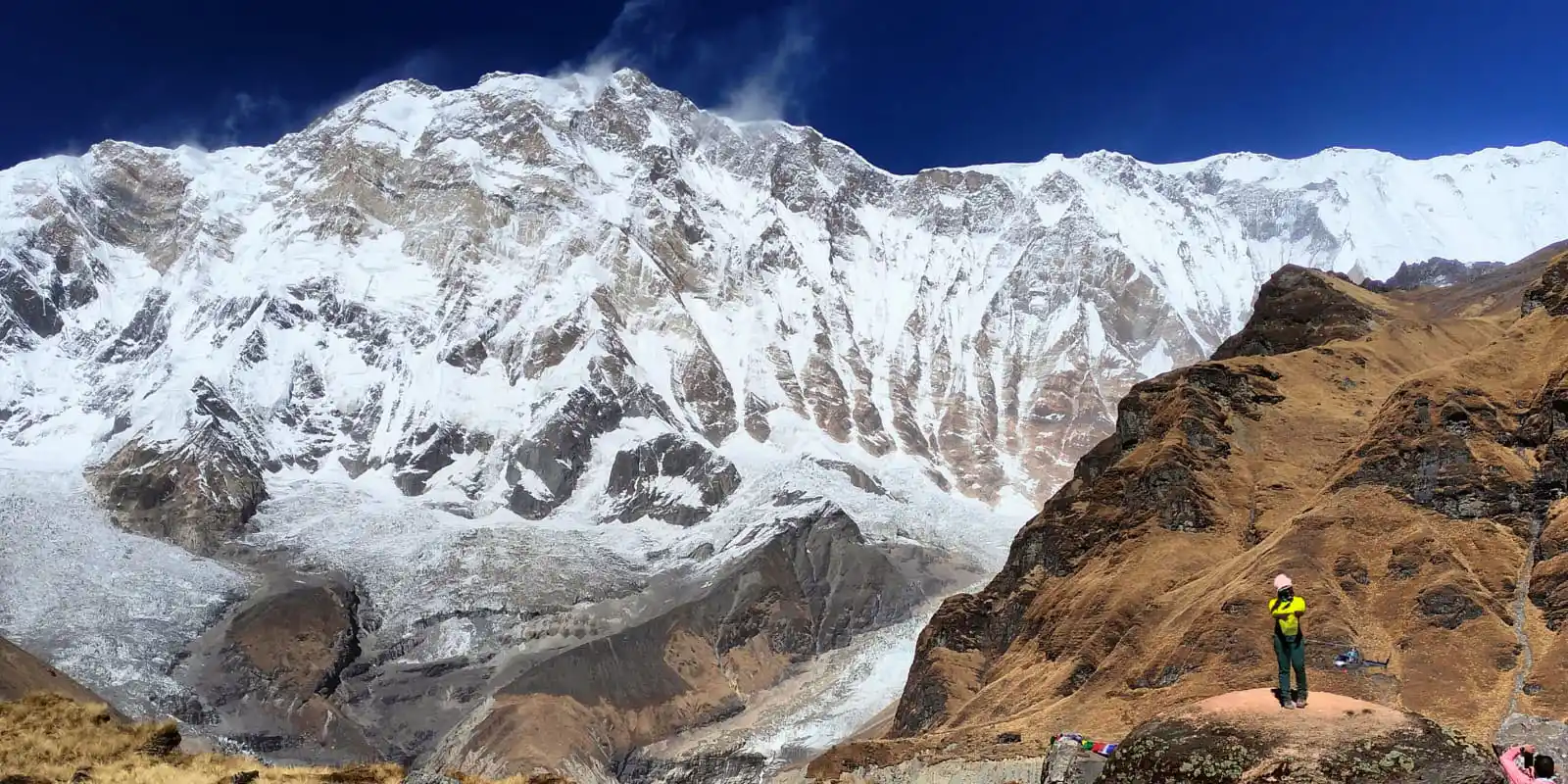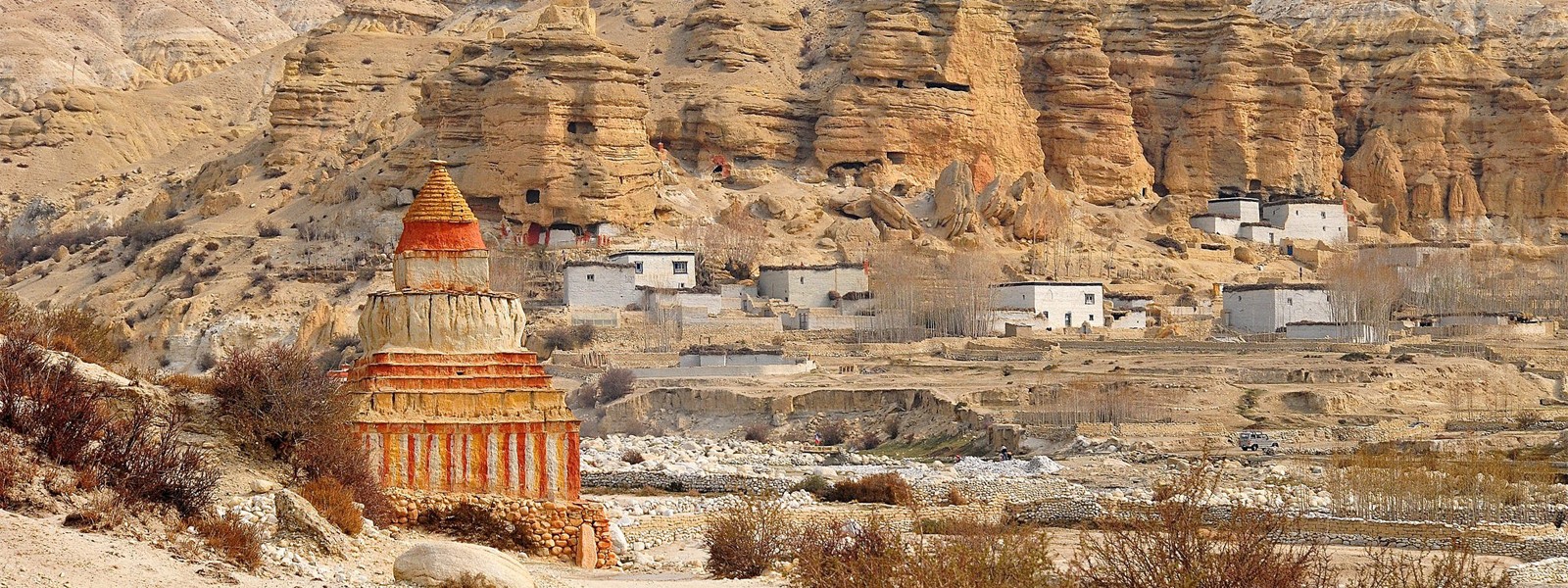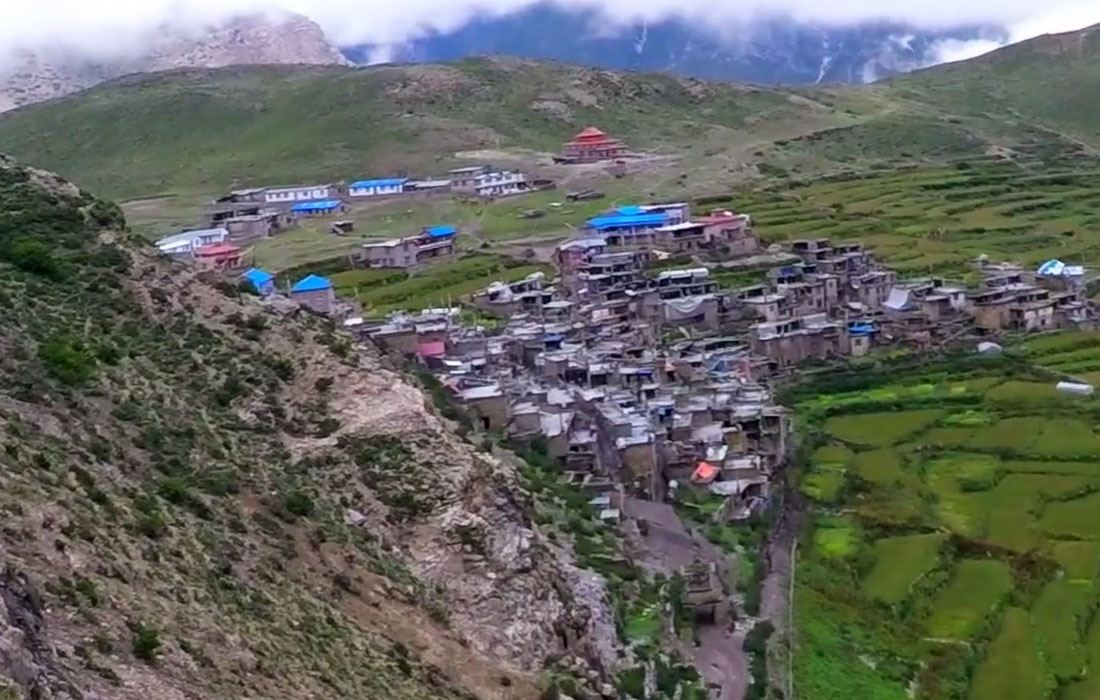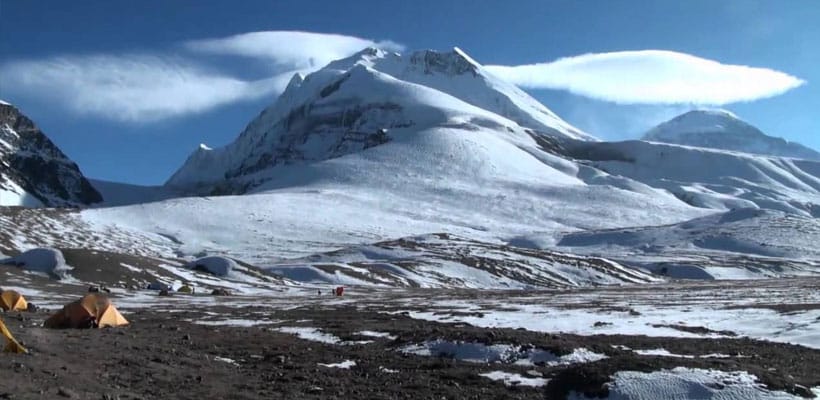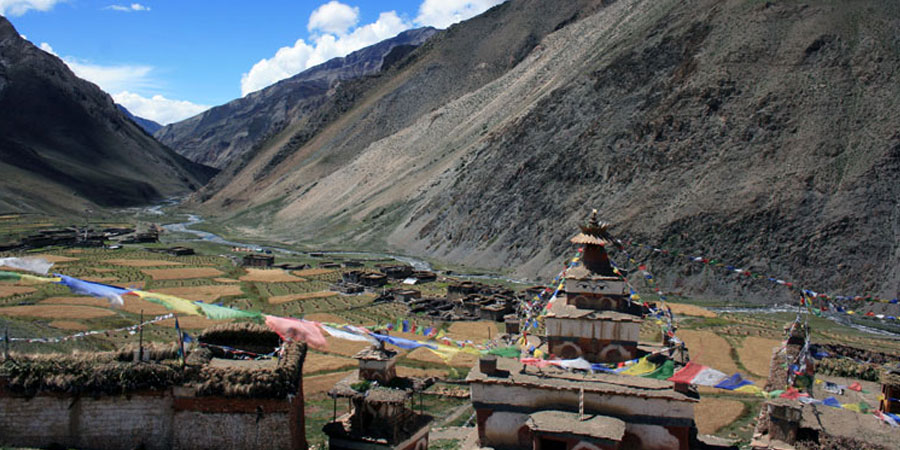Accommodation during Dhaulagiri Base Camp Trek
- In Kathmandu and Pokhara we provide comfortable accommodation in 3-star hotels with breakfast on a twin-sharing basis.(Private room accommodation can be arrange at an extra cost)
- During the trek, we provide comfortable teahouses/lodges and camping. accommodation on a twin-sharing basis.
Meals and Drinking water on Dhaulagiri Base Camp Trek
On the Dhaulagiri Base Camp Trek, meals are provided through a mix of teahouses in accessible villages and full camping support in remote sections. You will be served three nutritious meals daily—breakfast, lunch, and dinner—prepared to keep you energized for the challenging terrain. In teahouses, meals include Nepali staples like dal bhat, noodles, momos, soups, pasta, pancakes, and eggs, while in camping spots our kitchen crew prepares a variety of freshly cooked dishes. A typical camping menu may feature porridge, Tibetan bread, pancakes, eggs, pasta with vegetables, chowmein, fried rice, thukpa, soups, and simple desserts such as pudding or canned fruit. Hot drinks like tea, coffee, and hot chocolate are also served.
Hydration is equally important during the trek. While bottled water can be purchased in villages, we strongly encourage using refillable bottles to reduce plastic waste. Our team provides boiled and purified water at camps, and guides carry water purification tablets or drops to ensure safe drinking water at all times. Staying well-fed and hydrated is essential for your comfort and acclimatization in this demanding region.
Required Permits for the Dhaulagiri Base Camp Trek
You’ll need an ACAP and a TIMS Card for the Dhaulagiri Base Camp Trek. All fees are included, and we handle the permits for you.
- Annapurna Conservation Area Permit (ACAP): NPR 3,000 per person
- Trekkers’ Information Management System (TIMS) Card: NPR 1,000 per person
Best Time for Dhaulagiri Base Camp Trek
The best seasons for the Dhaulagiri Base Camp Trek are spring (March to May) and autumn (September to November). During these months, trekkers can enjoy stable weather, clear skies, and outstanding views of Dhaulagiri and surrounding peaks. Spring also brings colorful rhododendron blooms, while autumn offers crisp air and excellent mountain visibility.
Winter (December to February) is much colder with heavy snowfall at higher elevations, making the trek more challenging but quieter for those ready for the conditions. The monsoon season (June to August) is not recommended due to heavy rains, slippery trails, and the risk of landslides. Choosing the right season ensures a safer and more rewarding trekking experience.
Dhaulagiri Base Camp Trek Difficulties
The Dhaulagiri Base Camp Trek is considered one of the toughest and most remote treks in Nepal, making it best suited for seasoned trekkers. This 20-day adventure involves crossing high mountain passes, navigating steep ascents and descents, and trekking through rugged, isolated terrain. To make it achievable, we’ve crafted a carefully paced itinerary that balances challenge with proper acclimatization.
While facilities are limited and camping is required in many sections, our full support team ensures you’re well taken care of with nutritious meals, quality tents, and guidance throughout the journey. Strong physical fitness, endurance, and previous trekking experience are highly recommended to handle the demanding conditions.
For trekkers ready to take on a true Himalayan expedition, the Dhaulagiri Base Camp Trek offers a once-in-a-lifetime challenge through dramatic landscapes and untouched wilderness. With our expert crew, you’ll be prepared to face the difficulties and enjoy the rewards of this extraordinary adventure.
Altitude Sickness and Prevention on the Dhaulagiri Base Camp Trek
At Aarohi Holiday, your safety is our highest priority, especially on challenging treks like the 20-day Dhaulagiri Base Camp journey. Our guides are highly trained in altitude sickness prevention, first aid, and emergency procedures. The itinerary is carefully designed with gradual ascents and acclimatization days, giving your body the time it needs to adapt to the high altitude above 5,000 meters.
Altitude sickness may cause symptoms such as headaches, nausea, dizziness, or fatigue. At the first sign of discomfort, our team responds immediately with proper measures—this may include additional rest, hydration, a slower pace, or descent to a safer altitude. In rare cases, emergency evacuation is arranged for your well-being. Before starting the trek, you’ll receive a complete safety briefing, and throughout the journey, our expert guides monitor your condition closely. With these precautions in place, you can take on the Dhaulagiri Base Camp Trek with confidence and peace of mind.
Travel Insurance for Dhaulagiri Base Camp Trek
The Dhaulagiri Base Camp Trek takes you deep into remote and high-altitude areas of Nepal, making travel insurance an essential requirement. Your policy should include emergency air evacuation coverage up to 5,500 meters, and we also recommend adding medical expense coverage for extra peace of mind.
Trekking to Dhaulagiri Base Camp is a true Himalayan adventure, but its remoteness and altitude come with inherent risks. The right travel insurance ensures we can guide you safely through this challenging and untouched region of the Himalayas.
Dhaulagiri Base Camp Trek Itinerary
The Dhaulagiri Base Camp Trek begins in Kathmandu (1,350m), where you’ll explore UNESCO World Heritage sites and immerse yourself in the city’s vibrant culture. From Kathmandu, you’ll take a bus to Beni (850m), the entry point to the Dhaulagiri region. The trek starts with a short hike from Beni to BabiaChaur (950m), passing through lush landscapes and small villages.
From BabiaChaur, the trail ascends to Dharapani (1,400m) and continues to Muri (1,850m), offering glimpses of terraced fields and local settlements. The journey proceeds through Boghara (2,080m) and Dovang (2,529m) to Choriban Khola (3,110m), surrounded by stunning Himalayan scenery. You’ll then reach the Italian Base Camp (3,660m), where a day is spent acclimatizing to the high altitude.
After acclimatization, the trek continues to Glacier Camp (4,210m) and then to Dhaulagiri Base Camp (4,745m), where you’ll marvel at the majestic Dhaulagiri massif. A second acclimatization day allows for exploration or an optional climb to Dhampus Peak. The route then ascends to Hidden Valley (5,200m) via French Pass (5,360m), followed by a descent through Dhampus Pass (5,234m) to Yak Kharka (3,680m).
From Yak Kharka, you’ll trek to Jomsom (2,710m), followed by a scenic 35-minute flight to Pokhara. The journey concludes with a drive back to Kathmandu (1,300m) for a final overnight stay before departure. This trek offers a thrilling blend of high-altitude adventure, cultural immersion, and breathtaking Himalayan vistas, perfect for those seeking a challenging off-the-beaten-path experience.
Dhaulagiri Base Camp Trek cost
The cost of the Dhaulagiri Base Camp Trek varies depending on the season, group size, and level of services you choose. Our 20-day trek is priced at USD 2,250 per person, covering all essential services from your arrival in Kathmandu to your final departure. This all-inclusive package ensures a safe, comfortable, and unforgettable adventure in one of Nepal’s most remote and spectacular Himalayan regions.
This price is based on a minimum of two people. For group bookings, we offer special discounts of 5 to 10 percent, and the group leader can join the trek free of charge. With our transparent pricing and no hidden fees, you get excellent value for a truly rewarding Himalayan experience in the Dhaulagiri region.
Important Notes for Dhaulagiri Base Camp Trek
- The journey from Kathmandu to Beni by local bus, takes about 7 hours and Jomsom to pokhar by flight includes.
- Porters can carry up to 20kg, and with one porter for every two trekkers, we recommend packing no more than 10kg per person. A durable duffle bag will be provided for your gear.
- There are no ATMs on the Dhaulagiri Base Camp Trek, so carry enough cash from the city before starting your trek.
- Meals are included throughout the trek, while services like hot showers and device charging at teahouses or lodges are available for an additional fee.
- Meals and entry fees for sightseeing in Kathmandu and pokhara are not included in the trek package.
- Drones require hard-to-get permits, so it’s best not to bring.
Fitness Preparation for the Trek
The Dhaulagiri Base Camp Trek is a challenging high-altitude adventure that demands good physical fitness and endurance. To make the most of your experience and minimize fatigue or injury, we recommend preparing with regular cardio exercises such as hiking, jogging, cycling, or swimming for at least 6 to 8 weeks before the trek.
Strength training for your legs, core, and back is also important, as the trek involves long ascents, steep descents, and carrying a daypack. Practicing long walks with a loaded backpack will help condition your body for the trail. Being physically prepared not only improves your stamina but also aids in better acclimatization to the high elevations of the Dhaulagiri region.
A Typical Day on the Trail
A typical day on the Dhaulagiri Base Camp Trek involves 5 to 7 hours of trekking through remote valleys, rugged trails, high mountain passes, and pristine alpine landscapes. Each day begins with a nutritious breakfast before you set out on well-planned trails that gradually gain elevation, allowing your body to acclimatize.
Along the route, you’ll pass through isolated villages and camping spots, providing a glimpse into the local culture and lifestyle. The pace is steady, with breaks for rest, photography, and enjoying the spectacular surroundings. Evenings are spent at campsites with freshly prepared meals, giving you time to relax, recharge, and prepare for the next day’s adventure in the heart of the Dhaulagiri region.
Arrival Instruction
Upon your arrival at Tribhuvan International Airport, our company representatives are stationed to welcome you to the country. We request you to carefully look for your name being held by our representatives following the events upon landing. The representatives are responsible to escort you to your hotel in Kathmandu. You will see men offering you to carry luggage and take you to your destination as you exit the airport. We request you pay no attention to these people and follow the designated representatives and follow their instructions. You will also need to keep an eye on your luggage and belongings to avoid any complications.
Nepal Visa Entry Procedure
For entry into Nepal, there are visa requirements everyone (except Indian nationals) must complete before being allowed to pass through immigration. This is for air travel as well as overland transportation. Most visitors may obtain a visa to enter Nepal, however, there are exceptions.
- 15-day single entry: US $30
- 30-day single entry: US $50
- 90-day multiple entries:US $125
Please have a passport valid for at least 6 months from the time of entry, and have cash ready, preferably in US dollars, though there are other currencies Nepal Immigration accepts. If you are entering via overland, you must have US cash and 3 passport photos. For arrival by air, the kiosks at the airport take your picture for you. For the most up to date list of exceptions for visa on arrival or to obtain the most current visa information, visit the Nepal Department of Immigration website.
